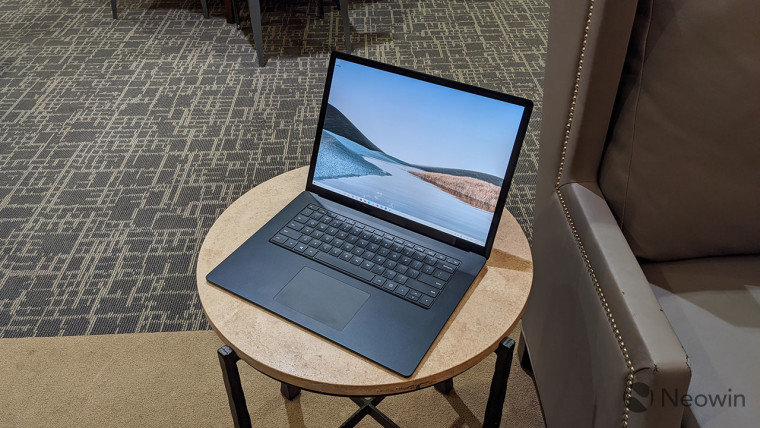
Details about Microsoft’s upcoming Surface Laptop 3 successor have been making the rounds for a while now. The device is expected to be announced in April and is said to offer Intel and AMD SKUs on both the 13.5-inch and 15-inch models, a departure from the Laptop 3 that came with AMD’s processors only on the larger model. While rumors suggest that the devices will ship with Intel’s 11th-gen Tiger Lake chips, there has been uncertainty about which generation of chips will the AMD models be powered by.
Today, a report citing information from retailers lists the possible specs of the Laptop 4, hinting at the processor options that the Redmond firm’s clamshell will offer. The specs suggest that while the Intel versions will be – unsurprisingly – powered by Tiger Lake Core i5 and Core i7 chips, the AMD parts might be 4000-series Ryzen chips based on the Zen 2 architecture. This means that the firm will not be opting for the latest Zen 3-based Ryzen 5000 mobile processors.
Another interesting point mentioned in the report is that the RAM and storage options on the Intel versions will max out at 32GB and 1TB SSD, respectively. However, the AMD versions are expected to be offered with up to 16GB RAM and 512GB SSD. As for the design itself, the Laptop 4 is expected to retain its predecessor’s overall design and port selection. The display resolution too is expected to be identical, making the upgrade a mere spec bump.

Just like with the Laptop 3, the AMD chips on the Laptop 4 are expected to be called the Microsoft Surface edition processors bearing model numbers Ryzen 5 4680U and Ryzen 7 4980U CPU. The SKU details also hint at tweaks to the chips, with higher clock speeds possibly on the cards. As for Intel, the laptops are said to be offered with a Core i5-1145G7 and the Core i7-1185G7, sporting Iris Xe graphics.
It will be interesting to see what performance differences the two chips bring to the device. The Tiger Lake chips – based on Intel’s 10nm SuperFin process – offer impressive graphics capabilities thanks to Iris Xe graphics and come with support for PCIe 4.0. The Ryzen chips – based on the 7nm Zen 2 architecture – come with higher physical cores. They come with Radeon Graphics.
Source: WinFuture

_small.jpg)















26 Comments - Add comment